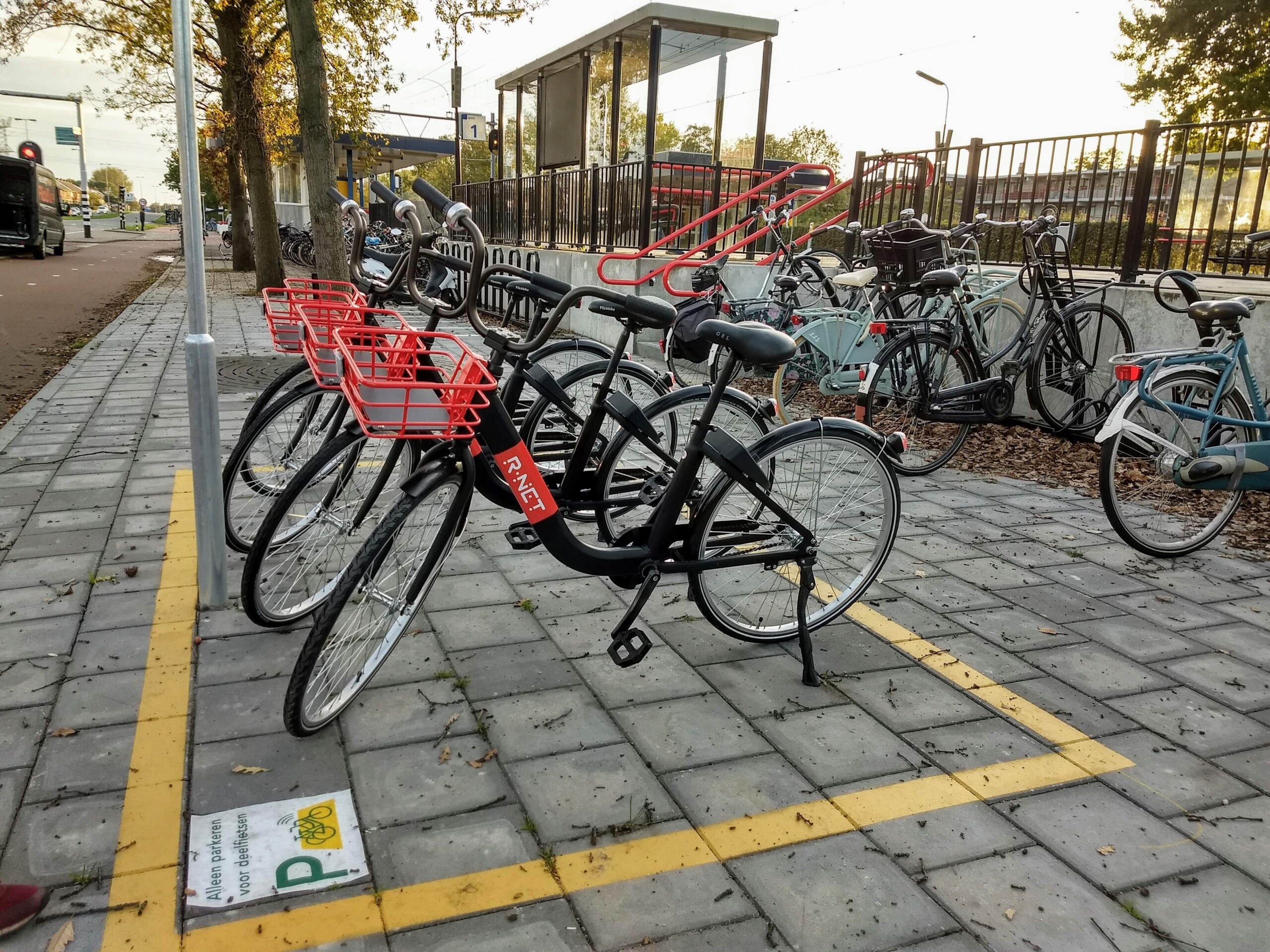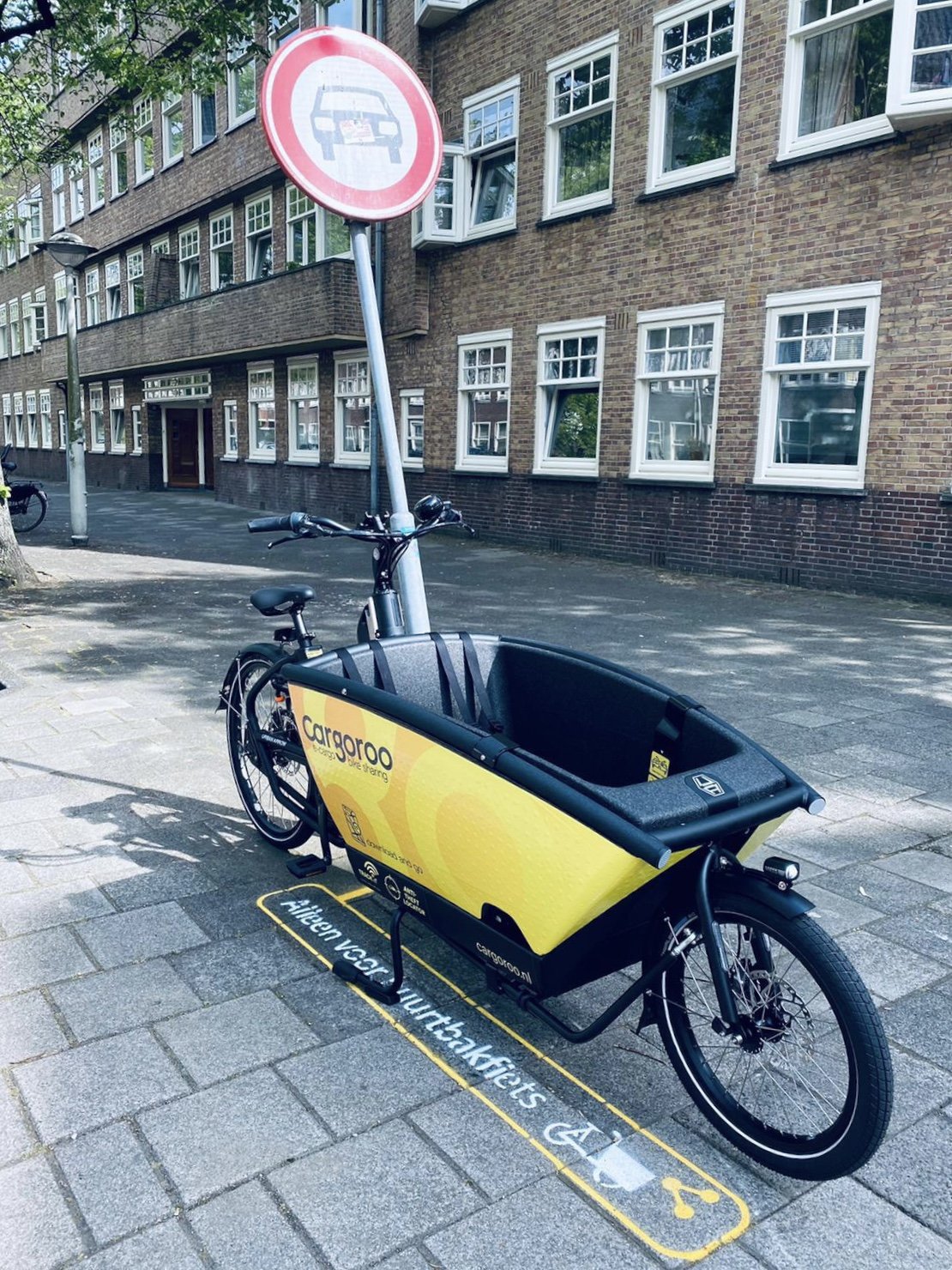Shared bicycle experiment
The municipality of Amsterdam will start experiments with shared bicycles and electric shared cargo bikes in the public space. With this, the municipality desires to study the additional value of shared cargo bikes for the city as to how public space nuisance can be reduced. This will be done after a less favourable experience in 2017, when the Amsterdam inhabitants and the city were overwhelmed by thousands of shared bicycles. Random bicycles ‘scattered’ in the public space and were an eyesore to many. A way this can be done differently will be provided by Anouk Kors of the programme shared mobility. Anouk is curious about your experiences and tips from your city.
How enforcement led to a new policy
In 2017, Amsterdam was introduced to shared bicycles for the first time. Several parties then provided thousands of shared bicycles citywide. However, Amsterdam already is a bike city with limited available space. The narrow Amsterdam streets cannot be compared to the wide streets in Paris or Berlin. One can provide many shared bicycles in those cities, but this is different for Amsterdam. This ‘we will see what will happen’ approach basically dazed the municipality. The applicable rules and conditions for parking bicycles or the orderly use of public space were not made sufficiently clear at the time. This led to many complaints, and the handling of complaints was not arranged in advance, which caused even more annoyance.
As a result of this affair, a new policy was formulated. This resulted in the “Nota shared mobility, opportunities for the city” (adopted by the City Council on 20 June 2019).
New policy
This document explicitly includes the desire to carry out a maximum number of small-scale and area-specific experiments with shared bicycles. In addition, the supply of shared bicycles at metro stations is included in the Agenda for a Quiet City (measure 10). During the Agenda for a Car-Free Amsterdam discussion, several motions were adopted (document in Dutch) relating to shared bicycles.
How did you set up the pilot? Who took the initiative?
The municipality is investigating in what way the shared bicycle can contribute to particular policy goals. This could include reducing the number of cars, clean air, improved accessibility of city etc. Therefore, the municipality has taken the initiative to explore the design of several experiments with the provider.
Unlike 2017, the starting point here is area-based, small-scale and controlled, where it must be possible to make a financially feasible plan (business case). Soon, a back-to-many and back-to-one system (based on stations) were chosen, rather than a free-floating model. This means that you can only pick up your bicycle at a limited number of designated locations (back-to-many). In-between parking is allowed, but you will continue to pay. The shared cargo bike or neighbourhood bike must be picked up at location A and returned to location A (back-to-one). For the experiments, an exemption has been granted from article 2.5A of the APV. According to this article, it is prohibited to offer vehicles on or near the road for payment or otherwise for commercial purposes without a permit from the Municipal Executive. On 10 July 2020, exceptions were granted to four parties to compete for five area-specific exemptions (document in Dutch).

Shared bicycles in Amsterdam. Photo: Transport Authority Amsterdam
What is involved? What steps have been made during the process?
If a municipality wants to start a pilot project like this, a lot is involved. It requires market consultation and the development of a monitoring and evaluation plan. If you want to get to the bottom of it, all steps are listed in the attached document (in Dutch).
Collecting data
Monitoring and evaluating how the experiments proceed is essential. Data on rides and passengers is continuously being collected by software systems that regulate ride bookings. Providers share this data with the municipality, for example, via the CROW-dashboard. Customers can also receive a push message after their ride through the providers’ booking app with a short evaluation of customer satisfaction.
We collect quantitative data (number of bicycles, usage, parking time, locations etc.) and qualitative data via surveys (do these experiments contribute to the municipality). This requires significant consideration in advance.
Which problem was the most difficult to solve?
The design of the public space was quite a challenge. In principle, back-to-many or back-to-one works by geofencing (digital demarcation of certain areas or locations where bicycles can be rented and returned). Due to inspections and discussions with providers and colleagues from the regions, Amsterdam eventually decided to install physical parking facilities, including unique bicycle parking signs.

Special parking spot for a shared bicycle. Photo: Transport Authority Amsterdam
What are you going to do with the results?
The results of this pilot serve as input for a new policy on shared mobility. As part of the evaluation, we hold quarterly progress meetings with the providers. In addition, we have the data from the monitoring systems (CROW dashboard). All these results are initially shared with the board. First, after one year through an interim evaluation, and then after two years with a final review. This makes the assessment and the results public.
What can other parties learn from this?
Interesting to notice is how to deal with innovative forms of mobility in an experimental or pilot form. Which pilot works well, and which one is less favourable. We have certain expectations in this regard, but we can now test all the different approaches (free-floating and back-to-many or back-to-one). This is the only way we can find out what does (and what does not) work for Amsterdam. In addition, the results of these experiments are essential. The monitoring plan indicates that we will collect quantitative data and qualitative data (contribution to policy goals such as clean air and accessible city, and attitude and behaviour, complaints, and reports). Not only will there then be more insight into the added value of shared bicycles (or nuisance) for the city and its residents, but there may also be opportunities to reduce car and/or scooter use and to stimulate public transport. In the future, the shared bicycle could be an alternative for owning a second bicycle (or station bicycle). This may also reduce the pressure on public bicycle parking facilities. This will mainly benefit commuters and visitors to the city but will also have advantages for residents. Sharing cargo bicycles (which can be used by residents), for example, can save a lot of space in the street. If these are problems that other municipalities are also struggling with, such an experiment could also be an option for them.
What can we learn from other cities?
I am inquisitive about this because I know, for example, that Rotterdam and The Hague have more experience with shared bicycles and scooters on the street. This is partly because – after the mistake in Amsterdam in 2017 – they immediately started making agreements about what is and isn’t allowed. As a result, they are now slightly ahead of us. So please do share your own experiences, questions, or tips with us. The best way to do so is by responding to this article on the website or directly via LinkedIn.
Amsterdam Bike City will also be collecting experiences from other cities in the coming weeks, so please keep following us!










